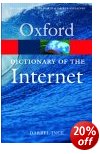free pages from our English Language software program
Colons – definition
![]() Colons are used to introduce strong pauses within sentences.
Colons are used to introduce strong pauses within sentences.
![]() The colon is the longest pause short of a full stop.
The colon is the longest pause short of a full stop.
Examples
![]() Colons are used to introduce lists:
Colons are used to introduce lists:
The car has a number of optional extras: sun roof, tinted windows, rear seat belts, and electrically operated wing mirrors.
![]() The colon separates two clauses which could stand alone as separate sentences, but which are linked by some relationship in meaning:
The colon separates two clauses which could stand alone as separate sentences, but which are linked by some relationship in meaning:
My brother likes oranges: my sister hates them.
![]() The colon is also used before a long quotation or a speech:
The colon is also used before a long quotation or a speech:
Speaking at Caesar’s funeral, Anthony addresses the crowd: “Friends, Romans, countrymen …”
![]() It is also used before a clause which explains the previous statement:
It is also used before a clause which explains the previous statement:
The school is highly regarded: academic standards are high, the staff are pleasant, and the students enjoy going there.
Use
![]() The colon can be used to provide emphasis, or to create dramatic effect:
The colon can be used to provide emphasis, or to create dramatic effect:
There can be only one reason for this problem: his total incompetence.
![]() It is also used at the end of a statement which is followed by an illustration:
It is also used at the end of a statement which is followed by an illustration:
The vase contains beautiful flowers: roses, tulips, and daffodils.
![]() NB! The colon followed by a dash (: —) is never necessary. The colon alone is sufficient, even before a list.
NB! The colon followed by a dash (: —) is never necessary. The colon alone is sufficient, even before a list.
![]() Notice that the items which follow a list are punctuated with commas if they are a succession of individual words.
Notice that the items which follow a list are punctuated with commas if they are a succession of individual words.
You will need four ingredients: flour, butter, milk, and sugar.
![]() If the items in the list contain clauses or phrases these may be punctuated with semicolons:
If the items in the list contain clauses or phrases these may be punctuated with semicolons:
You will need the following materials: some scrap paper; a pen, preferably blue or black; some envelopes; and some good, white, unlined writing paper.
![]() The colon requires careful handling. If you are in any doubt, use separate sentences.
The colon requires careful handling. If you are in any doubt, use separate sentences.
![]() The colon is also used between the title and the sub-title of a book:
The colon is also used between the title and the sub-title of a book:
Magical Realism: Latin-American fiction today.
Self-assessment quiz follows >>>
© Roy Johnson 2003
English Language 3.0 program
Books on language
More on grammar
